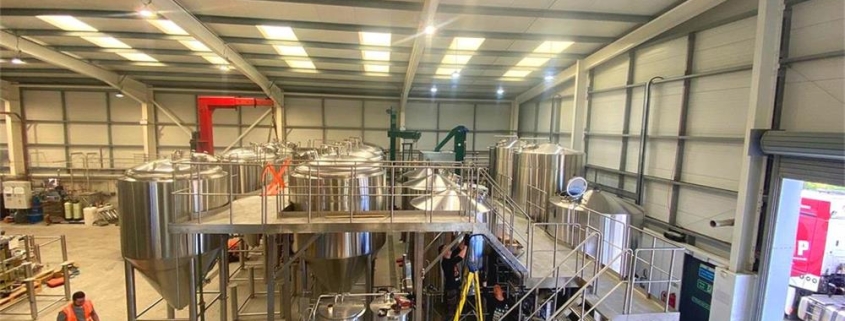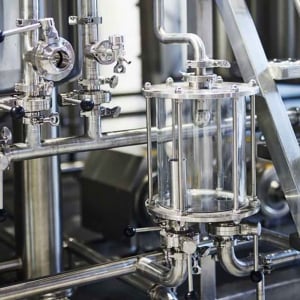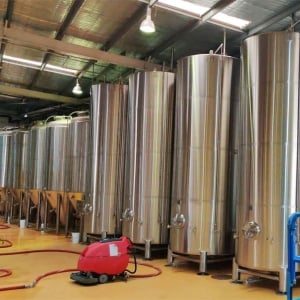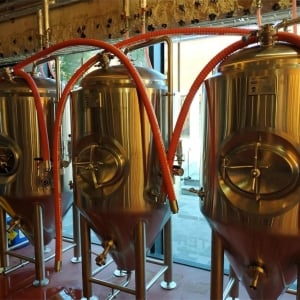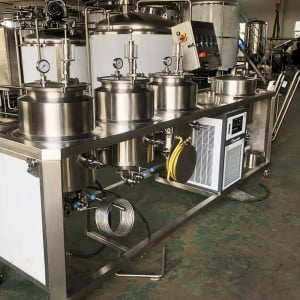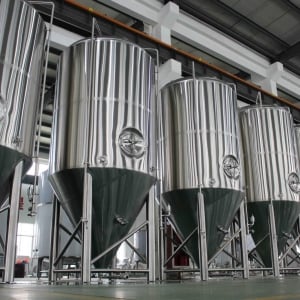The Ultimate Guide to Micro Brewery Systems
Overview of Micro Brewery Systems
If you’re diving into the world of craft brewing, a microbrewery system might be the way to go. Microbreweries have surged in popularity over the last decade, allowing passionate brewers to create unique, small-batch beers that cater to niche markets or personal tastes. Unlike large-scale commercial brewing, microbreweries allow for creativity, experimentation, and a more hands-on brewing experience. But what exactly is a microbrewery system, and how does it differ from standard brewing setups?
A microbrewery system is typically smaller in scale, designed for production volumes between a few hundred to a few thousand liters per batch. It contains all the necessary equipment—like mash tuns, fermentation tanks, and kettles—but is compact enough to operate in smaller spaces. Such setups make microbreweries ideal for pubs, restaurants, and local breweries looking to offer fresh, high-quality beer without the overhead of a large-scale operation.
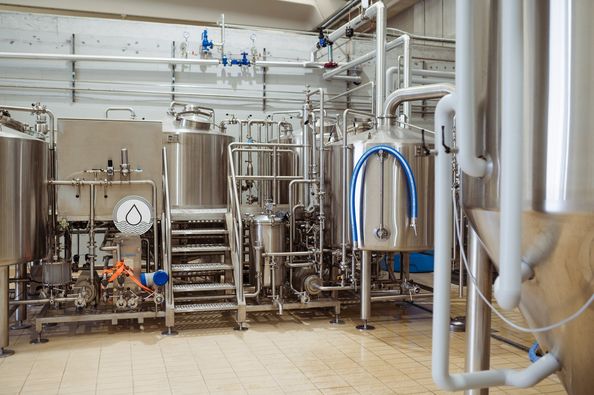
Microbrewery Equipment Guide
For a successful brewing setup, it’s essential to know your equipment. The following guide highlights the core components of a microbrewery system and the role each plays in creating that perfect pint.
Key Microbrewery Equipment Components
| Equipment | Description |
|---|---|
| Mash Tun | Used to mix crushed malted grains with hot water, creating a “mash” where enzymes convert starches to sugars. |
| Brew Kettle | Where the wort is boiled with hops, adding bitterness, flavor, and aroma. Boiling also sterilizes the mixture, ensuring a clean brew. |
| Fermentation Tanks | These are airtight vessels where yeast is added to ferment sugars into alcohol. Fermentation tanks are crucial for controlling temperature and pressure, which affect beer quality. |
| Heat Exchanger | Cools the hot wort down to yeast-friendly temperatures before it enters the fermenter, using water or glycol. |
| Bright Tanks | Used after fermentation to age and carbonate the beer. These tanks allow brewers to refine flavors before packaging or kegging. |
| Pumps & Pipes | Responsible for moving liquids through various stages of brewing, from mash tun to fermenter and beyond. High-quality pumps are essential for efficient and safe brewing. |
| Control System | An automated or semi-automated system that manages temperatures, timings, and other variables, giving brewers more precision. |
| CIP (Clean in Place) System | An essential part of maintenance, this system cleans and sanitizes tanks and pipes without needing to disassemble them, ensuring each batch remains free of contaminants. |
Types of Microbrewery Equipment and Their Specifications
When setting up a microbrewery, equipment choice varies by type, size, and functionality. Here’s a comparative table outlining the most common types of equipment available.
| Type of Equipment | Key Features | Ideal For | Price Range |
|---|---|---|---|
| Manual System | Basic controls, manual adjustments | Small, experimental batches | $10,000 – $30,000 |
| Semi-Automatic | Automatic temperature and time controls | Small to medium batch sizes | $30,000 – $60,000 |
| Fully Automatic | Full automation, programmable settings | Medium to large batches | $60,000 – $150,000+ |
| Modular Systems | Customizable, scalable designs | Breweries planning for growth | Varies widely |
| Mobile/Compact | Portable, space-saving setup | Restaurants, pubs, small spaces | $15,000 – $40,000 |
Each system type offers advantages and disadvantages. For instance, while a manual system is more affordable and hands-on, it requires closer supervision. On the other hand, fully automatic systems handle more of the work but come with a steeper price tag.
The Brewing Process in a Microbrewery
Understanding the brewing process is essential for anyone considering a microbrewery. This section breaks down the key steps to creating craft beer with a microbrewery system.
Step-by-Step Brewing Process
- Mashing: The brewing process starts with mashing, where malted grains are mixed with water in the mash tun. This step converts starches into fermentable sugars through enzymatic action.
- Lautering: After mashing, the mash is transferred to the lauter tun, where the liquid wort is separated from the grain husks. Lautering typically includes a sparging process to rinse additional sugars from the grain.
- Boiling: The wort is then moved to the brew kettle, where it is boiled and hops are added. This boiling process sterilizes the wort, extracts bitterness from hops, and intensifies flavors.
- Cooling: A heat exchanger rapidly cools the boiled wort, bringing it to the right temperature for fermentation.
- Fermentation: Once cooled, the wort enters the fermentation tank, where yeast is added. Over a period of days to weeks, yeast converts sugars into alcohol and CO₂, creating beer.
- Conditioning: In the bright tank, the beer is conditioned, or aged. This step helps to refine the beer’s flavor and carbonation before it’s packaged or kegged.
Space, Capacity, Design, and Customization
When planning a microbrewery, you’ll need to consider physical space, production capacity, and design options. Each of these elements can impact both operational efficiency and aesthetic appeal.
| Parameter | Details |
|---|---|
| Capacity | Ranges from 100 liters (small setups) to 2,000 liters per batch (larger operations), depending on market and production goals. |
| Space Requirements | Requires careful layout planning; a typical 500L system may need around 200-300 square feet of dedicated space. |
| Design & Layout | Must consider ease of movement, equipment accessibility, and safety regulations. Modular layouts are highly adaptable. |
| Customization Options | Tanks, kettles, and tuns can be customized in size, shape, and material to reflect the brand’s aesthetic and functional needs. |
Selecting the right capacity is often a balancing act. Smaller capacities allow for frequent, small-batch experimentation, while larger capacities support greater production volume and potentially higher profits.
Microbrewery System Supplier and Price Guide
Choosing a supplier and understanding the price range are critical steps in setting up a microbrewery. Here’s a guide to help you navigate the options.
| Supplier | Region | Price Range | Specializations |
|---|---|---|---|
| ABC Brew Equipment | USA | $30,000 – $150,000+ | Modular systems, semi-automatic systems |
| BrewTech Pro | Europe | $50,000 – $200,000+ | Fully automatic, custom designs |
| Craft Brew Supply | Asia | $20,000 – $100,000+ | Manual and compact systems, great for small spaces |
| Global Breweries | Worldwide | Varies widely | Full-service installation and post-sales support |
Before committing, it’s wise to get quotes from multiple suppliers and factor in potential additional costs, such as shipping, import duties, and installation fees.
Installation, Operation, and Maintenance Guide
Once equipment is purchased, the next step is installation and operation, which involves detailed setup, system checks, and calibration. Proper maintenance is also key to extending the life of your microbrewery equipment.
| Aspect | Details |
|---|---|
| Installation | Requires professional setup, especially for plumbing, electrical connections, and pressure systems. Some suppliers offer installation support or training. |
| Operation | Operating a microbrewery involves monitoring temperatures, pressures, and fermentation timelines. Many systems come with automation options to simplify these processes. Familiarity with brewing science, sanitation practices, and local regulations is crucial. |
| Maintenance | Regular maintenance includes cleaning the brewing system, checking for leaks, inspecting pumps and valves, and calibrating equipment. A Clean-in-Place (CIP) system can simplify this process, ensuring that your equipment is always in top shape and compliant with health standards. Regularly scheduled maintenance can prevent costly repairs and extend the lifespan of your equipment. |
Key Operational Tips:
- Record Keeping: Maintain detailed records of each brewing batch, including ingredients, temperatures, and fermentation times. This data can help refine your recipes over time and ensure consistency in flavor and quality.
- Quality Control: Implementing quality control checks at each stage of the brewing process ensures that the final product meets your standards. This may involve tasting tests and analytical assessments of pH, gravity, and clarity.
- Safety Protocols: Establish safety protocols for handling equipment, chemicals, and raw materials. Familiarize your staff with emergency procedures and first-aid measures.
How to Choose the Right Supplier for Your Microbrewery System
Choosing the right supplier can make all the difference in your brewing success. Here are some key factors to consider when selecting a supplier for your microbrewery system.
| Criteria | Details |
|---|---|
| Reputation | Look for suppliers with a strong track record in the brewing industry. Reviews, testimonials, and case studies can provide insights into their reliability and customer satisfaction. |
| Product Quality | Investigate the materials used in their systems. High-quality stainless steel and durable components are essential for longevity and sanitation. |
| Customization Options | Check if the supplier offers customizable solutions that fit your specific brewing needs, including equipment size, layout, and functionality. |
| Customer Support | Assess the level of support offered post-purchase. Responsive customer service and technical assistance can be invaluable during setup and operation. |
| Warranty and Maintenance | A solid warranty and maintenance plan can protect your investment. Make sure to inquire about the duration and coverage of their warranty. |
| Price Transparency | Request detailed quotes that break down costs, including shipping, installation, and any additional fees. Avoid suppliers with hidden costs. |
Choosing the right supplier is crucial not just for equipment procurement but also for establishing a long-term partnership that can support your growth and development in the brewing industry.
Advantages and Limitations of Microbrewery Systems
Understanding the pros and cons of microbrewery systems can help you make informed decisions about starting your brewing venture.
| Advantages | Limitations |
|---|---|
| Creative Freedom: Microbreweries allow for experimentation with unique recipes and flavors, catering to local tastes. | Higher Initial Costs: Setting up a microbrewery can be expensive, especially for high-quality equipment. |
| Community Connection: Craft breweries often foster strong local relationships, with patrons eager to support local businesses. | Regulatory Challenges: Navigating licensing, permits, and health regulations can be complex and time-consuming. |
| Small Batch Production: Flexibility to produce limited edition or seasonal brews can create buzz and customer loyalty. | Time-Intensive: Brewing can be labor-intensive, requiring significant time and effort for each batch. |
| Market Trends: The craft beer market is growing, providing opportunities for niche marketing and community engagement. | Operational Risks: Competition is fierce, and market saturation can pose challenges for new entrants. |
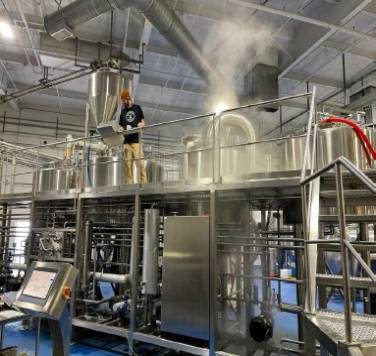
FAQ
Curious about microbrewery systems? Here’s a handy FAQ table that answers some common queries you might have!
| Question | Answer |
|---|---|
| What is a microbrewery? | A microbrewery is a small-scale brewery that produces limited quantities of beer, typically focusing on quality and unique flavors. |
| How much does it cost to set up a microbrewery? | Costs can range from $10,000 for small systems to over $150,000 for larger, more advanced setups, depending on equipment and customization. |
| What equipment do I need? | Essential equipment includes a mash tun, brew kettle, fermentation tanks, heat exchanger, and pumps, among others. |
| Can I operate a microbrewery from home? | Yes, but local laws and zoning regulations must be checked, as operating a commercial brewery typically requires a license. |
| What are the legal requirements for a microbrewery? | You’ll need various permits and licenses, including federal permits from the Alcohol and Tobacco Tax and Trade Bureau (TTB) and local health department approvals. |
| How long does it take to brew beer? | The brewing process can take a few weeks to a couple of months, depending on the style of beer and fermentation process. |
| Can I sell my beer directly to consumers? | Yes, but this usually requires additional licenses for distribution, retail, or on-site consumption. |
Conclusion
Setting up a microbrewery system is an exciting journey filled with opportunities to innovate and connect with your community. Whether you’re brewing for personal satisfaction or aiming to create a local favorite, understanding the intricacies of brewing equipment, processes, and the market is essential. With the right setup, a passion for brewing, and a keen business sense, your microbrewery can flourish.

